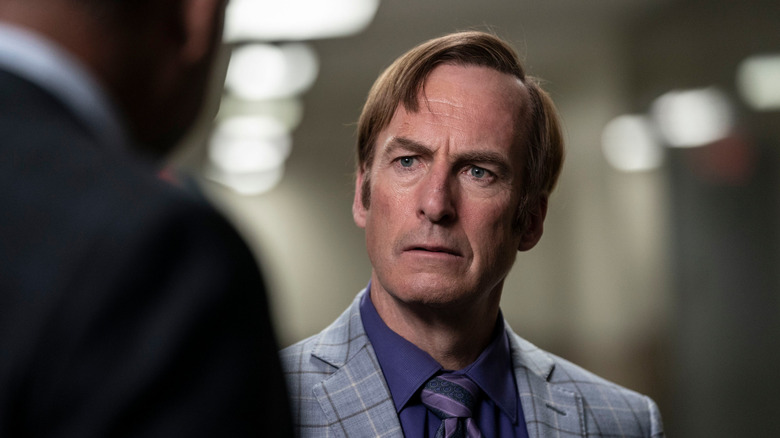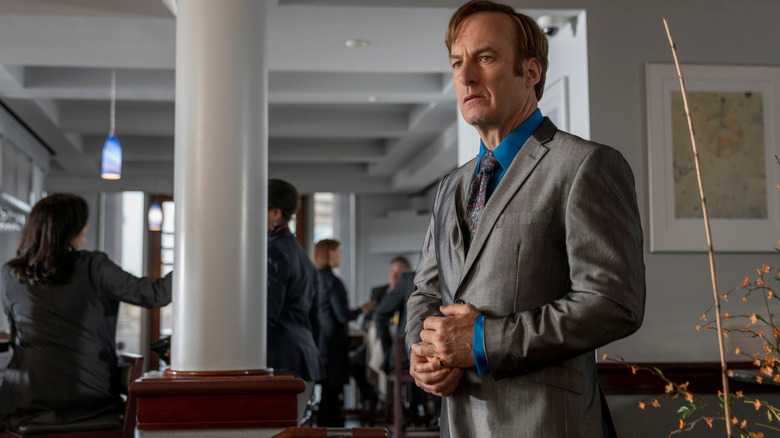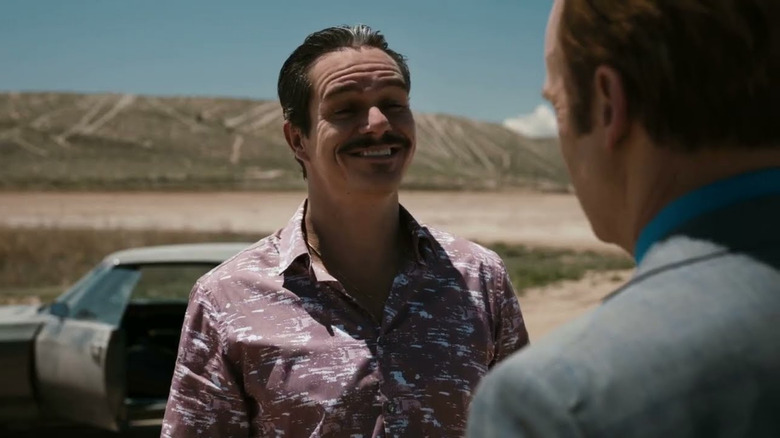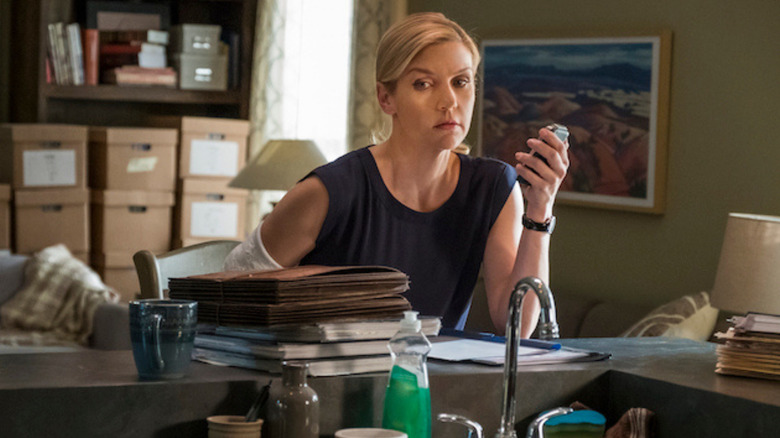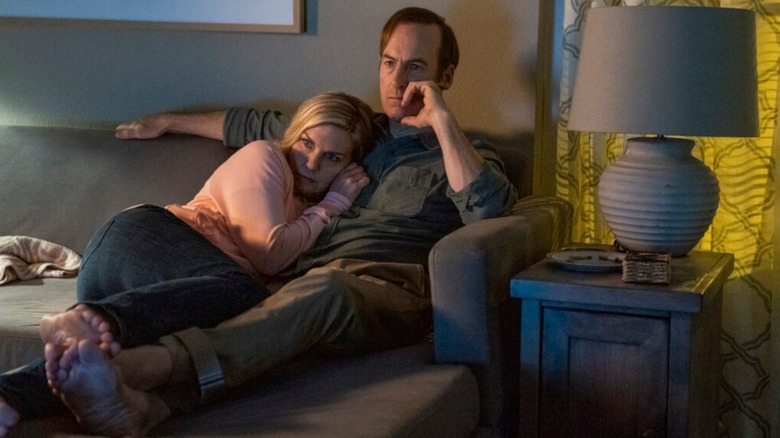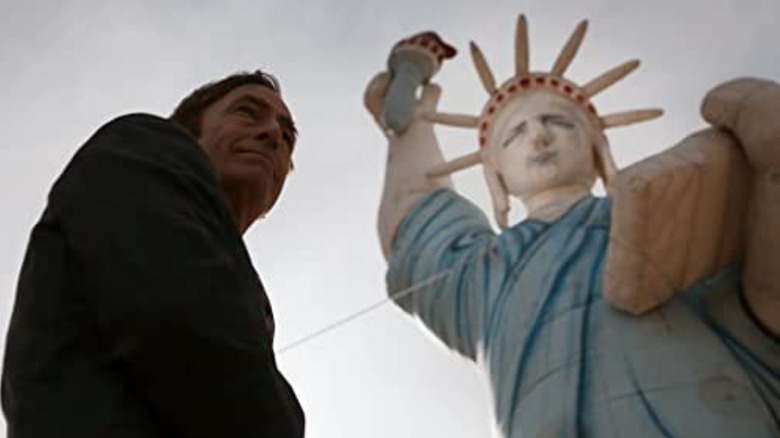5 Reasons Better Call Saul Is Better Than Breaking Bad
So, you've probably read the title of this feature and are already thinking of rebuttals. Maybe you're about to quote-retweet this piece with some variation of backlash. Whether you are or aren't doesn't matter that much to me, as I'm just happy you decided to click the article and give it a read.
I want to get something out of the way right now — "Breaking Bad" is one of the best television shows ever produced. The tragic tale of Walter White is one that rightfully deserves all the fanfare it gets, and I am not trying to argue otherwise. Hell, I was one of the many people that were skeptical of the decision to make a Saul Goodman-centered spin-off when it was first announced. I was fully expecting it to be a cheap cash-grab to capitalize on a popular product.
However, it became apparent over time that this line of thinking was extremely wrong. "Better Call Saul" not only stands out as an excellent television program in its own right, but it even achieves the rare status of a spin-off being better than the original source material in some aspects.
It allowed Saul to become more than a comic relief character
As soon as he was introduced in "Breaking Bad," it was clear that the man formerly known as Jimmy McGill (Bob Odenkirk) was meant as a standard comic relief character. While he was given some depth throughout the series, he couldn't seem to shake off that reputation as the funny guy that breaks up the tension. Even his "ultimate" fate as an aspiring Cinnabon franchisee was meant to be humorous compared to his somewhat-influential lawyer status.
Without "Better Call Saul," it is unlikely that he would ever shed this image. Instead, he's become far more layered and tragic than he was ever portrayed in the original series. Perhaps the saddest detail that's been emphasized throughout this spin-off is that Jimmy actually cares about helping others. He's not some hack fraud just trying to scam his clients, at least not entirely. Throughout the series, he always tries to get justice for his clients — though he uses less-than-legal methods to achieve that. Unfortunately, those methods lead down a rabbit hole that, as we see, becomes impossible to climb out of, no matter how hard he tries.
It has more multidimensional antagonists
There is no denying that Gus Fring (Giancarlo Esposito) is one of the best antagonists in popular culture, Hector Salamanca's (Mark Margolis) bell communication is iconic, and Todd Alquist (Jesse Plemons) had a certain psychotic charm to him. However, other antagonists that Walt and Jesse ran into throughout "Breaking Bad's" run didn't have the same lasting impact as these two "Better Call Saul" characters did, primarily because they weren't written in any other way besides them all being a generic bad guy.
The "Better Call Saul" villains are arguably far more interesting because they are shown as more than their menace. Gus and Hector are further developed while still being scary as hell, the latter receiving a detailed look at his life before his stroke. Other returning characters, such as the Twins (Luis and Daniel Moncada) and Tuco Salamanca (Raymond Cruz), are also developed more, their appearances feeling organic to the story instead of shoe-horned in for "Breaking Bad" fans.
However, the show really shines is in its original villains. Lalo Salamanca (Tony Dalton) is charming, clever, and downright evil all in equal spades, making him a character viewers can't help but love to hate. The show's antiheroes, those who pose major problems but still have some kind of moral compass, are also extremely compelling to the point that you can't help but feel bad for them; Howard Hamlin (Patrick Fabian) and Nacho Varga (Michael Mando) weren't aligned with the best people, but they still deserved happiness and freedom from those ties.
It reckons with the original show's misogyny problem
Something that has been interesting to witness is the general viewer consensus around Kim Wexler (Rhea Seehorn) and whether or not people like her as a character. For the most part, she is loved by "Better Call Saul" fans and is often referred to as a complex and entertaining character. This adoration is a stark difference from how viewers hated "Breaking Bad's" main female lead, Skyler (Anna Gunn). The hatred for this character, in particular, got so bad that both Gunn and Gilligan had to publicly defend her.
While a good portion of this vitriol can be summed up as internet trolls thinking that hating on women is somehow funny, a lot of it simply had to do with the way Skyler was written. While Gunn gave one hell of a performance throughout the series' five seasons, there is only so much that actors can do to elevate the writing of a one-note and somewhat stereotypical wife character.
It doesn't take much to see how the vitriolic responses to Skyler and how she was written affected the "Better Call Saul" writers. The show's female characters like Kim, Stacey Ehrmantraut (Kerry Condon), and Betsy Kettleman (Julie Ann Emery) simply feel more multidimensional than those that were in "Breaking Bad." Their storylines are more dynamic and, most importantly, they are written in a way that makes them feel like real human beings, not just stock characters.
Its prevailing sense of tragedy is more potent
From its very first episode, it was clear that "Breaking Bad" was not going to end happily. The events of "Felina" seemed to be the best possible scenario that the show's characters could end up in, and in a way, the series finale felt merciful.
That same sense of mercy isn't felt in any way throughout "Better Call Saul." Even in its happier or comedic moments, viewers can't help but dread what comes next because it could all easily go south. We know that things are not going to end well for Jimmy, who is now fully entrenched in the Saul character to the point where he can never go back to his old life. We as viewers already know what happens to him up to a point, but we don't know what else is in store for him.
This combination of certainty and uncertainty is why the show excels at maintaining an air of tragedy. Nearly every scene in the show is enveloped in sadness because of what the audience does and does not know. It hurts seeing Jimmy continue to want to help people despite the circumstances he finds himself in. It hurts seeing Jimmy and Kim happy and in love. Whatever does end up happening in these last few episodes, it won't be pretty.
Notice any patterns?
For those of you that have lasted this long, you may have noticed that all of these examples have an underlying theme to them. They all involve the writing of "Better Call Saul" in one way or another, and that isn't a coincidence.
There's no denying that "Breaking Bad" helped shape the way that modern television is written and presented, as even its filler episodes felt cohesive and fulfilling to watch. However, many of the most interesting ideas were often put solely onto Walt despite the show technically being more of an ensemble piece. This usually resulted in characters receiving uncompelling arcs or events being suddenly resolved using plot armor.
There's none of that within "Better Call Saul." Despite one being named in the title, Jimmy/Saul is far from the only well-developed character. Every character arc has thus far been compelling and logical, and every storyline on the show has either been effectively resolved or comes back at appropriate times. Overall, the writing on "Better Call Saul" is just better, more engaging, and most importantly, more understanding of the fact that it works best as an ensemble piece. Perhaps this is why it's lasted longer than the original series has.
"Breaking Bad" and "Better Call Saul" are available to stream on AMC+ and Netflix. The final episodes of "Better Call Saul" begin airing on July 11.
